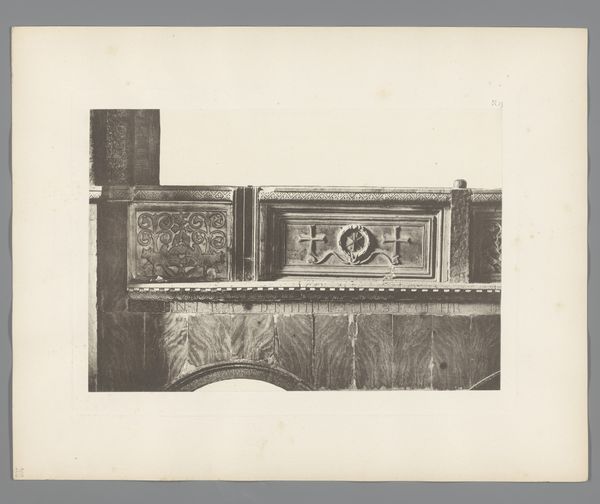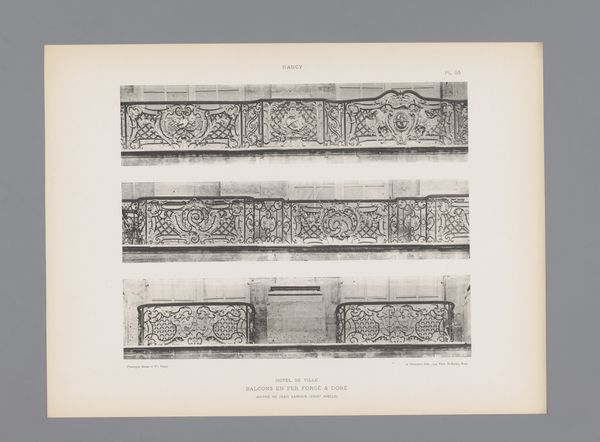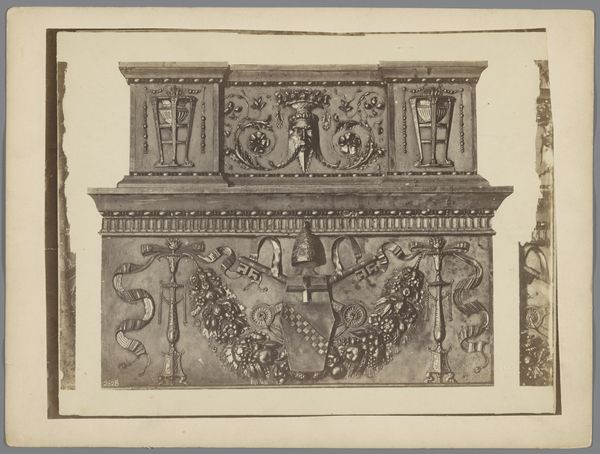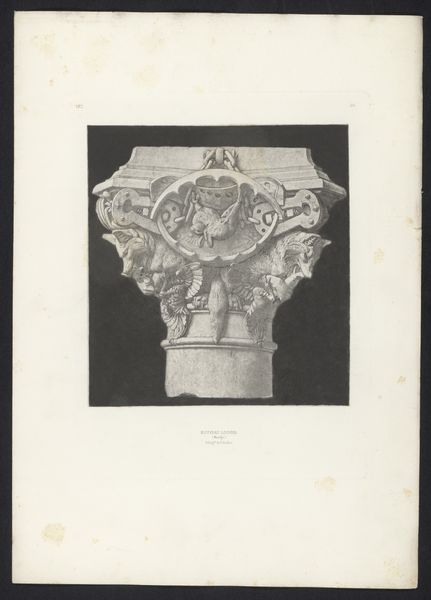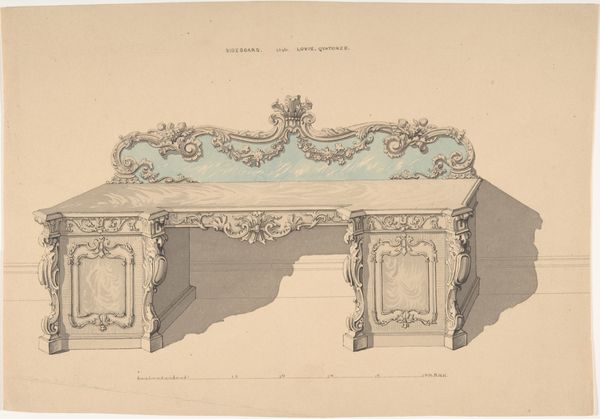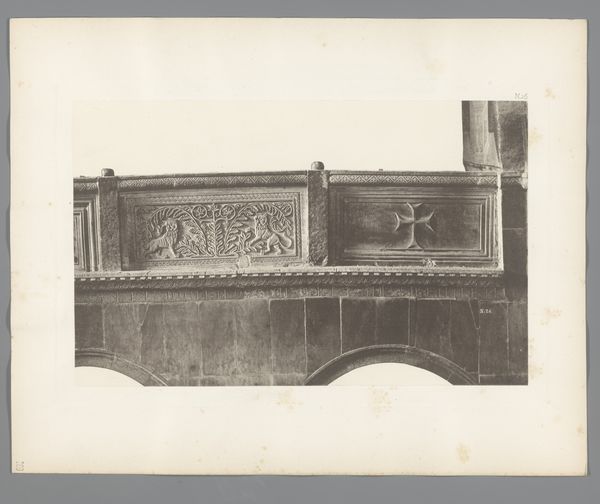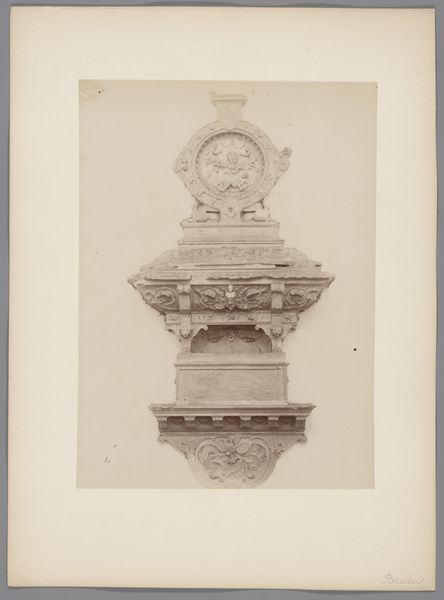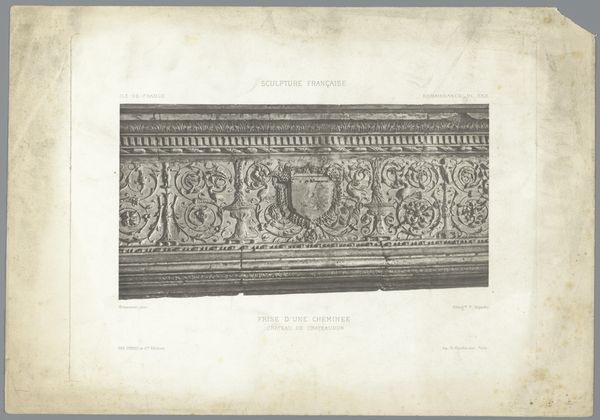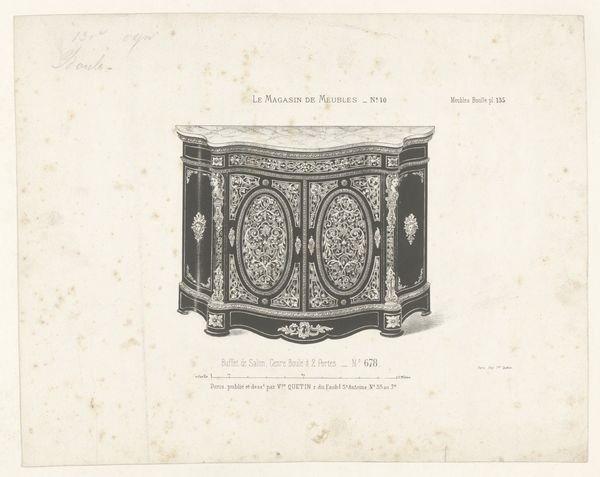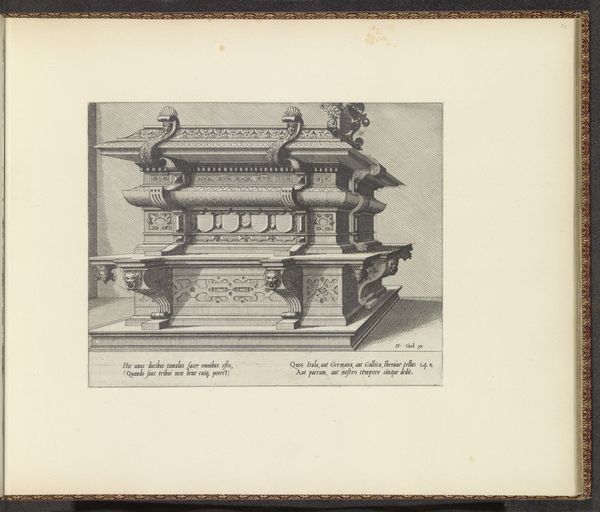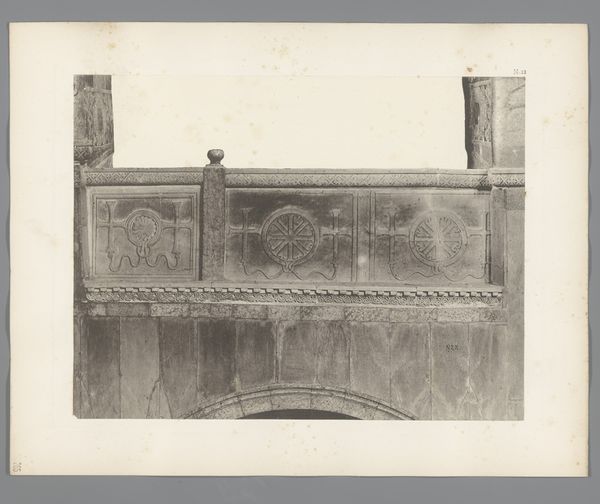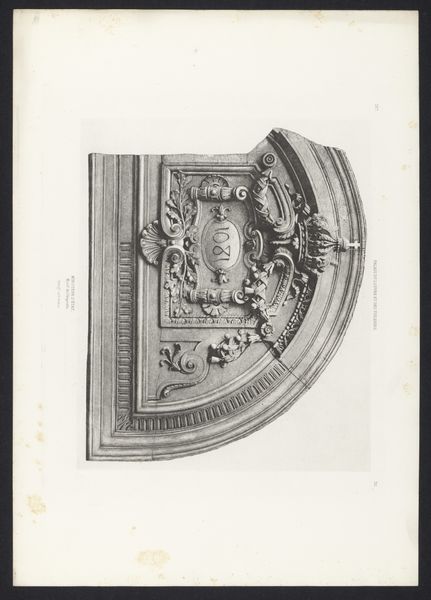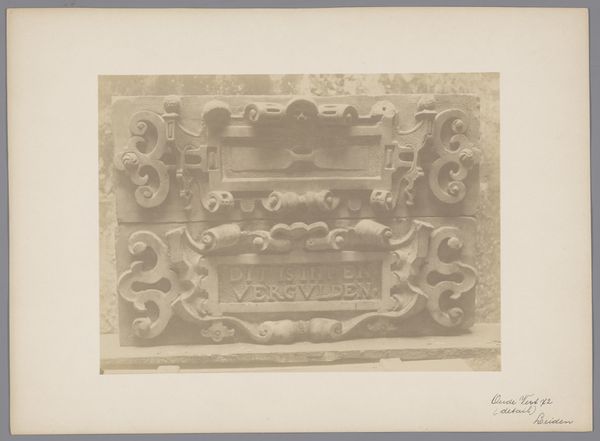
Copyright: Public Domain
Editor: So, here we have Wilhelm von Gloeden’s photographic print from between 1900 and 1925, a close up shot of sculptural ornamentation. It looks like it might be documenting a portion of the Opera de Paris. The detail is pretty stunning, though the light makes it feel quite solemn. What are your thoughts? Curator: What strikes me are the repeated motifs, and the way they echo throughout. Note the shields, framed by flora, recurring across the piece. Can you sense a visual rhythm there, a kind of pulsing symmetry? Consider how such repeated forms function within our collective visual memory, suggesting order, balance, and the ideals of classical beauty, and think of what these imply within a context of state authority. Editor: I do see it now, almost like a controlled garden, reflecting something about societal structure at the time. Is that what you mean? Curator: Precisely! The sculptor isn't merely decorating, they are also reinforcing ideas of societal values. Those idealized wreaths aren't accidental; they speak of civic virtue, victory, the idealized, noble state. These would be consciously loaded symbols that the architects chose. And do you think photography does this sculpture justice? Editor: That’s a good question… photography flattens and memorializes differently. It lends a clinical objectivity. Curator: True. We've lost something tangible of course, but gained a specific and considered document in return, a sort of lasting symbolic echo. Editor: Thinking about it that way helps me understand its layers so much better. Thanks! Curator: And it highlights how carefully constructed symbols can shape cultural perceptions across time, and can influence our emotions!
Comments
No comments
Be the first to comment and join the conversation on the ultimate creative platform.
